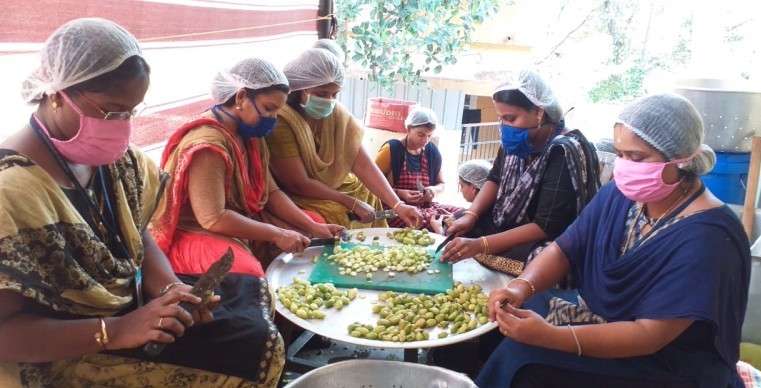In the run-up to the announcement of the nationwide lockdown on March 24th, 2020, the government failed to craft strategies to address possible fallout in several areas. One such area that went unaddressed was domestic violence.
The term domestic violence is used in many countries to refer to intimate partner violence, but it also encompasses child and elder abuse, and abuse by any member of a household. While women alone don’t face domestic violence, the rates of violence and abuse directed at women are high, particularly from perpetrators known to them. According to the World Health Organization, one in every three women across the globe experience physical and/or sexual violence in their lifetime; and at least 30 percent of all women in relationships have experienced physical and/or sexual violence by their partners.
Related article: The blindspot in our response to COVID-19
Domestic violence in India
According to the Crime in India Report 2018, published by the National Crime Research Bureau (NCRB), a crime is recorded against women in India every 1.7 minutes and a woman is subjected to domestic violence every 4.4 minutes. It also topped the categories of violence against women according to the report. As per the data, 89,097 cases related to crimes against women were registered across India in 2018, higher than the 86,001 cases registered in 2017.
The National Family Health Survey (NFHS-4), 2015-16 highlighted that 30 percent of women in India between the ages of 15-49 have experienced physical violence. The report suggests that among married women experiencing physical, sexual, or emotional abuse, an alarming 83 percent list their husbands as the main perpetrators, followed by abuse from their husbands’ mothers (56 percent), fathers (33 percent), and siblings (27 percent).
These statistics don’t capture the data on violence against women in its entirety. This is primarily due to the prevalence of orthodox social norms and the stigma that is placed on survivors of sexual or domestic violence, resulting in cases being grossly underreported. Women also feel unsafe while approaching the police, because they worry that if their partners are arrested, they may face worse abuse once they are released, and in the interim, might face harassment from their in-laws or others.
One in every three women across the globe experience physical and/or sexual violence in their lifetime. | Photo courtesy: Rawpixel
Domestic violence in the context of COVID-19
Fuelled by mandatory stay-at-home rules, physical distancing, economic uncertainties, and anxieties caused by the pandemic, domestic violence has increased globally. Across the world, countries including China, United States, United Kingdom, Brazil, Tunisia, France, Australia, and others have reported cases of increased domestic violence and intimate partner violence. India, infamous for gender-based violence (and ranked the fourth worst country for gender equality, according to public perception), is showing similar trends.
We know that women tend to face greater risks during emergencies, including health disasters such as pandemics. We also know that during times of economic hardship, there is an increase in violent, abusive, impulsive, compulsive, and controlling behaviour and aggression directed towards cohabiting partners and romantic partners. This has been widely studied since the time of the Great Depression, and seminal studies (such as feminist scholar Mirra Komarovsky’s The Unemployed Man and His Family) have evidence of the destructive effects of unemployment, lost income, and economic hardship on marital conflict, parenting quality, and child well-being.
Women whose livelihoods have been affected by the crisis, might also now be in financial distress—which is one of the barriers to removing themselves from a violent household. Women who might have been saving up money to leave, might now have to utilise these savings elsewhere.
Related article: Backlash: The consequences of defying gender norms
Within a few days of the lockdown in India, the National Commission of Women (NCW) noted a rise in the number of domestic violence complaints received via email. The NCW chairperson believes that the real figure is likely to be higher, since the bulk of complaints come from women who send their complaints by post, and might not be able to use the internet. Between the beginning of March and April 5th, the NCW received 310 grievances of domestic violence and 885 complaints for other forms of violence against women, many of which are domestic in nature—such as bigamy, polygamy, dowry deaths, and harassment for dowry.
The number of cases reported are most likely not proportional to the actual rise in domestic violence. This is because people locked in with their abusers may not be able to get access to a mobile phone, nor the space and time to call for help. Most avenues to seek help or to physically remove themselves from their situations are impaired.
Being trapped in a space with violent or manipulative individuals could lead to increased rates and intensity of threats, physical, sexual, and psychological abuse, humiliation, intimidation, and controlling behaviour. The ability to isolate a person from family and friends, monitor their movements, and restrict access to financial resources, employment opportunities, education, or medical care is heightened by a lockdown. These behaviours often have lasting effects on people, and can significantly affect mental health and well-being.
When governments start putting together plans to respond to crises such as COVID-19, addressing domestic violence must be prioritised. In India, the government seems to have overlooked the need to formally integrate domestic violence and mental health repercussions into the public health preparedness and emergency response plans against the pandemic.
We need an aggressive nationwide campaign to promote awareness about domestic violence, and highlight the various modes through which complaints can be filed. National news channels, radio channels, and social media platforms must be strategically used, similar to the way in which the government has deployed campaigns advocating for physical distancing and hand washing to combat COVID-19.
Reaching out to people facing domestic violence and in distress needs to be classified as an ‘essential service’ by the government.
Citizens must be sensitised towards the increased risks of domestic violence, and bystanders and neighbours should be urged to intervene if they suspect abuse, using tactics such as the banging on the door or ringing the bell. They should also be provided the benefit of anonymity if they choose to report a case.
When people are unable to file complaints through messages, post, or calls, essential services such as hospitals, grocery stores, and medical stores must be urged to help people get necessary support and send their messages to the authorities if needed. In France and Spain, pharmacies are being trained to identify people facing abuse through codewords: asking for ‘mask 19’ is being used as a code for people who cannot speak openly, to indicate that they are being abused and are seeking help.
Civil society organisations are critical to providing assistance. Hundreds of nonprofits are working to enable access to medical assistance, legal aid, counselling, 24×7 shelter needs, and so on. Therefore, in its efforts to combat COVID-19, the government must allow civil society organisations, counsellors, mental health organisations, and other service providers to come to the aid of people facing domestic violence.
Reaching out to people facing domestic violence and in distress needs to be classified as an ‘essential service’ by the government.
—
Know more
- Learn more about the ‘Bell Bajao’ campaign and how to intervene if you suspect domestic violence.
- Read about recognising signs and patterns of domestic abuse, and how to break the cycle and create safety plans.
- Go through the features of The Protection of Women from Domestic Violence Act, 2005.
Do more
- If you or anyone you know is facing domestic violence, reach out to the National Commission for Women’s emergency WhatsApp helpline (7217735372) that has been set up for the COVID-19 crisis.
- Help circulate lists of helplines across India for domestic violence and intimate partner violence. Compilations of helpline numbers can be found here, here, and here.







